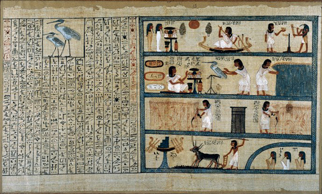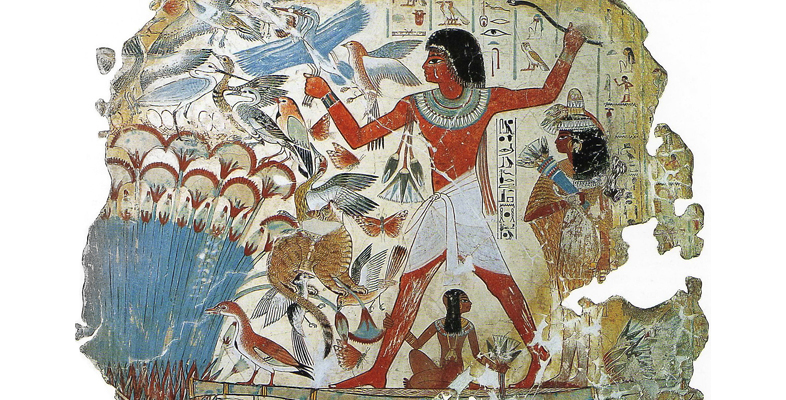9.2 The principles in practice
So what does this mean in terms of our reading of an Egyptian picture?
The representation of the figure we are looking at is not influenced by foreshortening. In fact, quite to the contrary, it is determined by an extreme avoidance of foreshortening. Each element is shown as if it were presented to us straight on (Figure 30).

‘Element’ here does not mean ‘figure’, in the sense of complete human figures. Rather, it means the elements out of which figures are composed – an arm, a foot, a torso, etc. Neither does it mean that the elements are seen from the front. Feet, for example, are always represented as if seen from the side. What it means is that the elements are represented as if they are seen straight on. Or more to the point, they are depicted as if what is being represented is a mental image of the element in its entirety, not subject at all to the vagaries of perception, e.g. to the spectator moving around the object, to moving one’s head, etc. That is to say, all accidental factors accruing to the perception of an object in real space and time are systematically excluded.
Another key term to describe this state of affairs is that the Egyptian system of representation is not, like the post-Greek/post-Renaissance western one, ‘observer-centred’. It is, rather, an ‘object-centred’ system.
Various types of questions follow. One is: what are the consequences of this for the way a picture is organised? A second is: why?
The answers below stick fairly close to Schäfer’s own words.
To take the second first: Schäfer begins by saying ‘It seems entirely obvious to most of us that we must render the perspective aspects of our visual impressions if we want to represent the outside world’ (p. 81). He says that for the most part we respond to people who do not do this – he cites ‘primitive’ people, untutored adults, and children – ‘by feeling superior’ (p. 81).
Yet it is perspectival representation, spectator-oriented representation, that has been the exception rather than the rule in human cultures. Our common sense is far from being universal common sense.
Schäfer was at pains to point out that Egyptians did not literally ‘see’ things differently from us. All human perception is, within certain norms, the same. As he says, no spear would ever have hit its target if the person who threw it did not have an ability to judge recession in space. The only alternative to the possibility that some people literally perceived objects in space differently is to accept that: ‘men have always been conscious of the phenomena of perspective at all periods, but for some reason they have not at all periods made use of this awareness in their drawings’ (p. 81).
This ‘reason’ at bottom, is that in the majority viewpoint, it is ‘appearance’ that is regarded as ‘an illusion which distorts things’; that ‘the thing is not as it is shown in perspective drawing’ (p. 88). What drives resistance to perspectival rendering is the experience of a ‘contradiction between perspective sense data and "objective" reality’ (p. 89). And, importantly, it is the sense of ‘objective reality’ that has been given priority.
